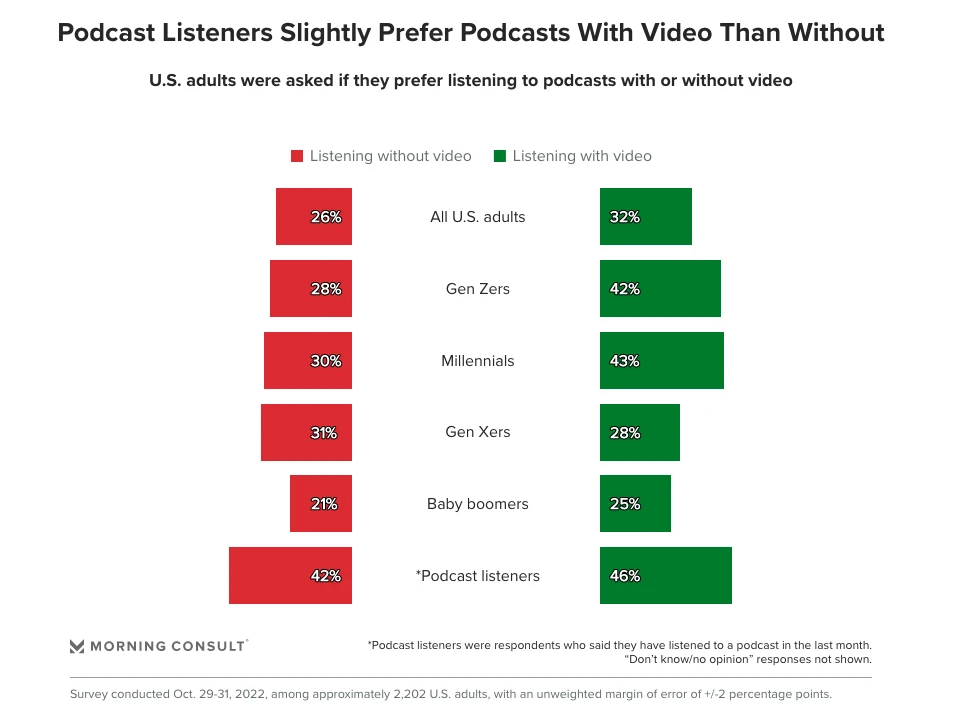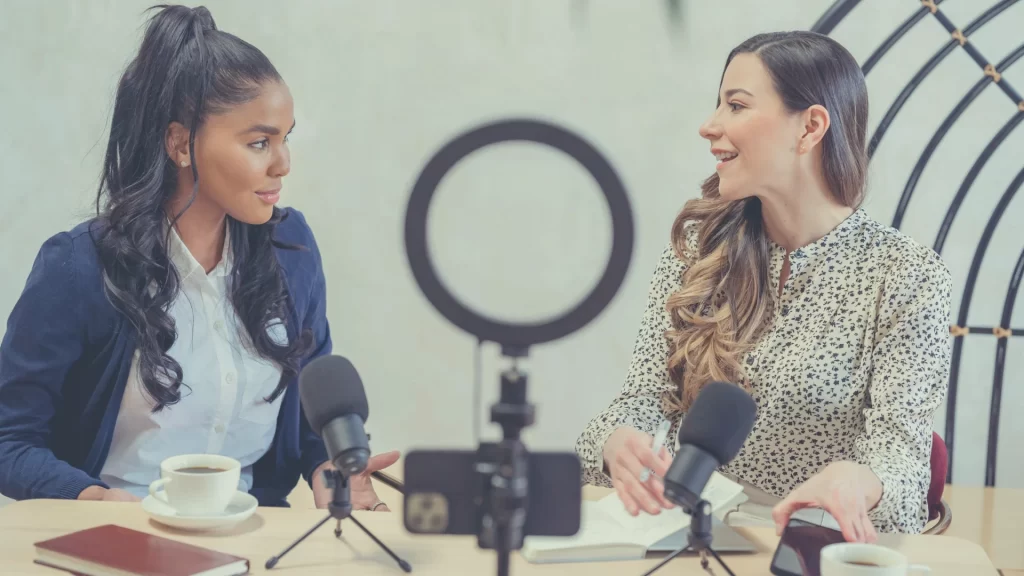All major trends in podcasting point to a video-first podcasting strategy as vital for success.
But is it right for your brand?
That’s what I want to address this month.
What is a video-first podcasting strategy?
A video-first podcasting strategy is an approach to podcasting where the primary focus is on producing video content for promotional purposes.
However, the video content doesn’t just sit alongside the audio content you produce. Instead, video serves as the primary driver of your storytelling and audience engagement.
With a video-first podcasting strategy, audio is important, but not necessary to what you’re trying to accomplish as a brand.

Why consider a video-first podcasting strategy?
In January, Morning Consult released the results of a survey that showed 46% of active podcast listeners prefer consuming podcasts with video. Only 42% wanted audio only.
The reason? 51% said they wanted to see the reactions of the host and guest, and 50% of their survey respondents indicated that video helps them better focus on the podcast.
This new data demonstrates that video podcasts help your engagement efforts. And there are several more benefits to using a video-first podcasting strategy that make that clear.
- Increased visibility: Video content is more likely to be elevated and shared on social media, given the preferences of social platforms.
- Wider audience reach: The available audience for your podcast is much larger than audio-only podcasts and includes people who prefer to consume content on video-only platforms.
- Improved SEO: Video content is better optimized for search engines, making it easier for your content to be found by potential new listeners and viewers.
Other benefits include new visual storytelling opportunities. Video can enhance your brand’s storytelling by including visuals that are important to your audience (pictures, charts, graphs, etc.) Previously, I’ve shared tips for video podcasts with best practices, if you’re interested.
What are the downsides of trying to produce a video podcast as opposed to an audio-only podcast?
Cost and time are the biggest considerations for executing a video-first podcasting strategy. To successfully pull off a video-first podcast, you need to have the resources to either produce quality video that can be distributed to multiple platforms, or outsource that work.
Video podcasts also require a lot of upfront costs, including cameras, lighting, and other equipment. These costs can increase dramatically when considering studio space, multi-camera setups, and software needs.
As always, you can scale up or down based on your brand’s budget. I know budget-conscious brands that have pulled it off for less than $1,000 and big brands that have gone all in by building $50,000 studios. It’s your choice.
But beyond cost, you have to know if you or your company has the capacity to handle the production and distribution of video and audio content.
A typical video podcast requires a full version, vertical clips for Instagram and TikTok, landscape clips for Facebook and LinkedIn, and all produced at varying lengths for each platform.
If you’re doing it well, that can easily turn into a full-time job. This is also where AI tools are coming into play, which I wrote about last month.

Summary: Is a video-first podcasting strategy right for you?
A video-first podcasting strategy only makes sense if you’ve done the math and considered the costs and you or your company’s capacity to produce a video podcast.
For some, the cost is always going to be too great. For others (and I know a few), it’s all about capacity. They just don’t have the time to do a video podcast justice, which is why they reach out to someone like me.
But the trends remain the same. Video podcasts provide more engagement, discoverability, and opportunities for brand enhancement than audio-only podcasts.
That’s a wrap for this month. I hope this gives you something to consider as you develop your podcast strategy. But if you still have questions, I’m here to help. Let me know your thoughts, feedback, or podcast recommendations by leaving a comment below. If you want more content like this in your inbox, sign up for my monthly newsletter here.

